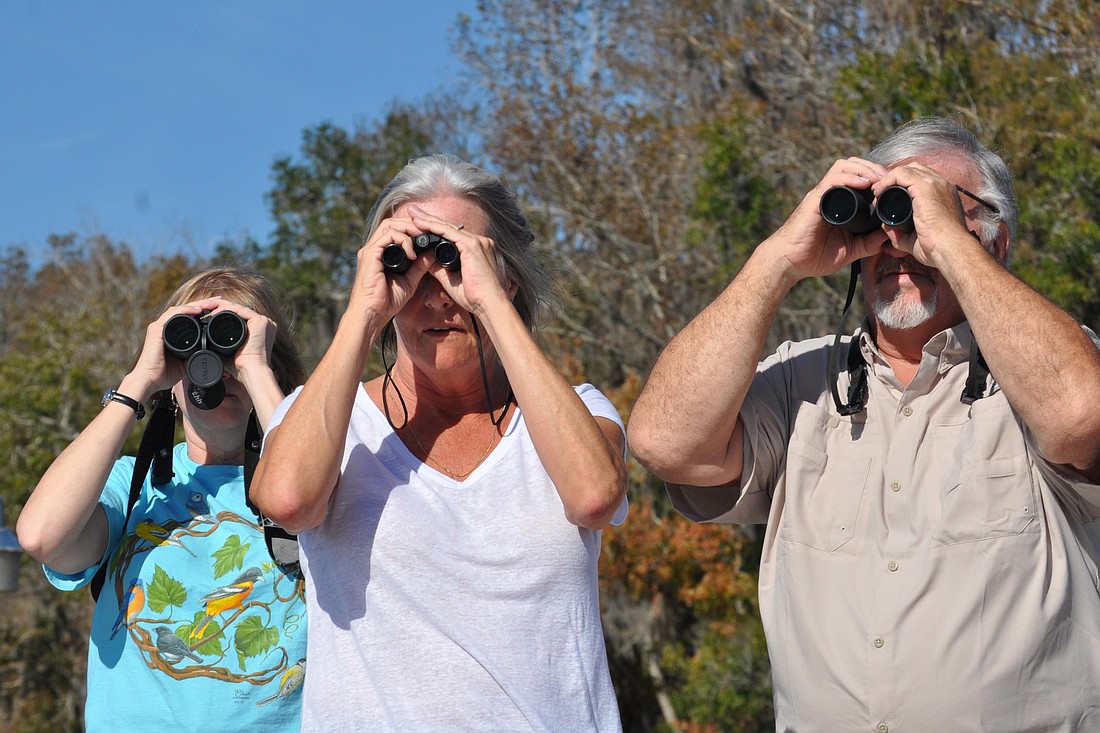- February 28, 2025

It’s funny how many things look like a bird when you want to see one bad enough.
The dark shape — far away and topped by a white maybe-head — even seemed to move, and the five veteran birders I was with pulled out binoculars.
But it was still blurry.
Was that little triangle a beak? Did a feathered head just swivel?
We were confounded – until team leader Joe Dziak assembled a tripod-mounted scope that showed that our eagle was actually, well, a tree stump.
As we packed up, chuckling, a sheriff’s deputy pulled over, said he loved birding. We told him we’d just seen an amazing wooden eagle and, when he peered through scope, he let out a belly laugh.
This was kind of gold-caliber material birders share at the water cooler.
I was tagging along with the National Audubon Society’s Flagler Chapter on its annual Christmas Bird Count. The team I went with was one of a number of local teams, and ours covered the rural west.
“Our club averages around 100 or so species for the count,” Joe Dziak said. “That’s taking into account birds from the Intracoastal Waterway, the shorebirds, the woodland birds.”
As a non-birder barely able to tell some of our showy Florida wading birds apart, I wasn’t sure what to expect of the event. But it sounded simple enough: We’d drive out, stop when somebody spotted a bird, maybe get out and look through binoculars then mark our findings in a notebook.
Simple, right?
Not. At. All.
Not long after we set out at 8 a.m., our caravan pulled into an undeveloped community near County Road 305, and we started walking.
Soon the birders, walking along a wooded path, started saying incomprehensible things like: “Ah, that’s a yellow-rumped,” or, “There’s a catbird.”
Only things I saw, though, were trees and sky. Not a single yellow rump on my radar.
“Where?!” I said, camera in hand, ready to take a Pulitzer Prize nature shot.
“Oh, we heard it,” they said.
Cool.
Where I heard only a mishmash of distant and high-pitched chirping, yipping and tweeting, the five birders I was with — Dziak and his wife Judie, Karen Brown, Barbara Salter and Amy Evans — could pick out nuanced calls.
A while later, from a bridge over Little Haw Creek, the birders tallied more songbirds. This was just getting ridiculous now.
They pointed some spec-silhouettes out in the distance. Where I saw grains of flying pepper, they noted wing and head shape, made positive I.Ds.
Trips out to the water brought me some comfort, though. I could see the birds, and they were close enough for pictures.
But there was something missing: the ducks, which had been there in previous years, the Dziaks said, were all gone.
Their absence concerned Joe Dziak, who said some ornithologists have speculated that the Atlantic Flyway — the major bird migration route along the nation’s coast — was moving inland.
But even without the ducks, we saw plenty: herons, egrets, vultures, pelicans and even a bald eagle, resting in a tree near the creek.
By about 2 p.m., our group had tallied about 50 bird species (I had tallied a solid five-ish), but the birders weren’t done. The event wasn’t all about numbers; it was a holiday tradition for birders who often go out with the same group for years in a row.
“It’s a lot of fun,” Joe Dziak said. “There’s always something to see out there.”
For more on the Flagler County branch of the National Audubon Society, visit flagleraudubonsociety.org.